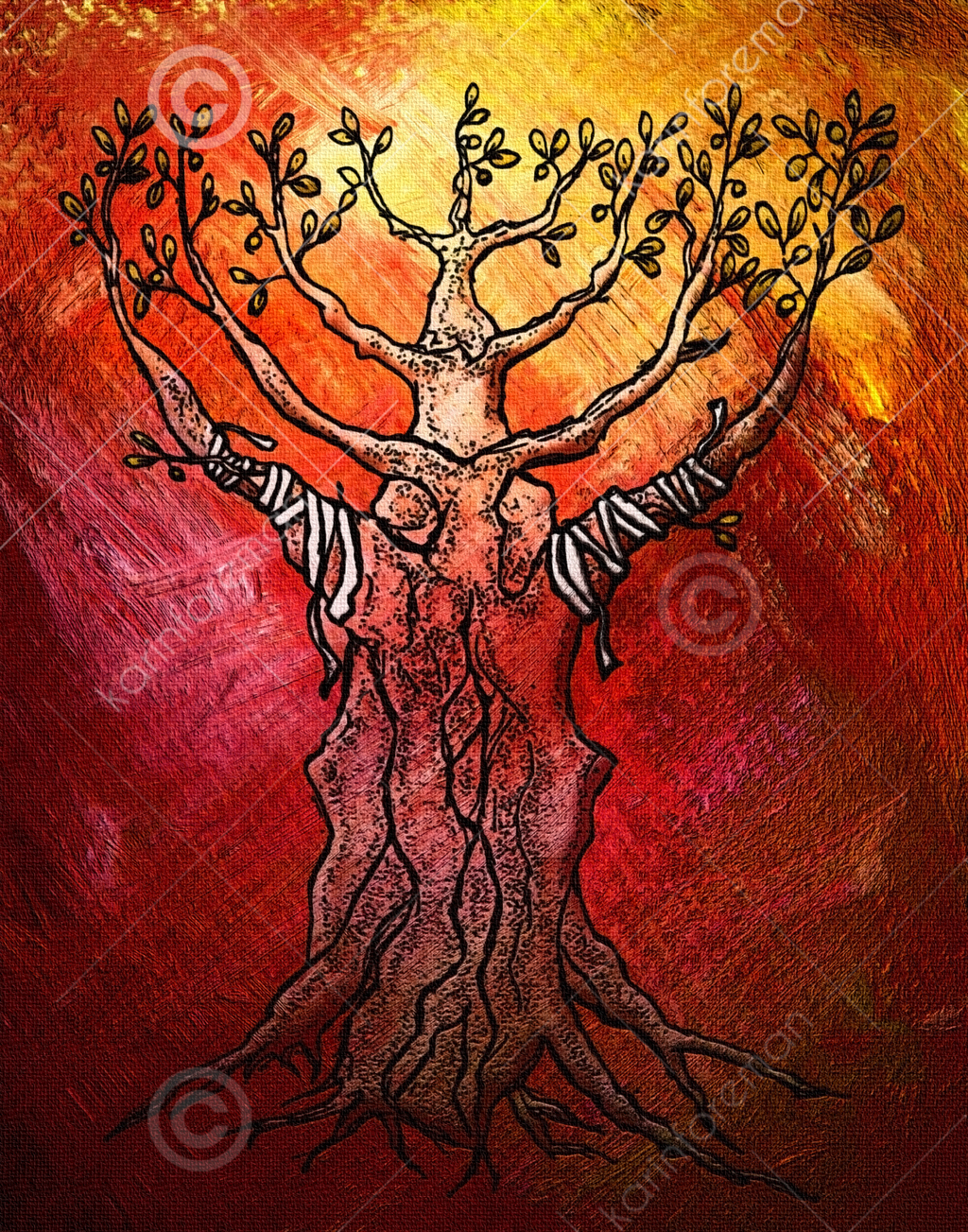Mixed Media (Acrylics with Pen and Ink on Heavy-Weight Textured Strathmore Paper)
The background was painted with acrylics in thick strokes—a technique called impasto. This technique creates a texture and adds expressiveness. The word impasto is Italian and its verb form “impastare” means “to paste”. You can use this method to push a painting into a three dimensional sculptural rendering. Vincent van Gogh is a famous artist who used this method for aesthetics and expression.
The tree in Ingrafted Branches is outlined in pen and ink and has a light wash to distinguish it slightly from the background.
The inspiration for Ingrafted Branches comes from Romans 11:11-24. The concept is that it’s not the branches that are holy or superior, but the root is the deciding factor if the branches are holy or not. Verse 18 points out, “Consider this: you do not support the root, but the root supports you.” Therefore, if a wild olive shoot is grafted in it now shares the nourishing sap from the olive root.
Verse 22 states that we should consider G-d’s kindness in this whole process in how richly He blessed the Goyim.
The olive tree is drawn in such a way to loosely form a nine-branched candelabrum lit during the eight-day holiday of Hanukkah. The ninth holder is called the shamash (“helper” or “servant”). He has the task of igniting the other eight. The trunk features an artistic expression of people holding each other up. The bandages represent not only the grafting in procedure but also stand for healing and becoming equal sharers in the rich root of the olive tree.
